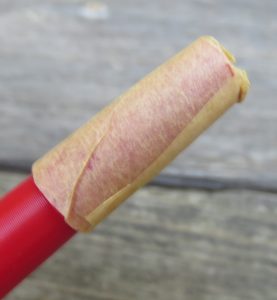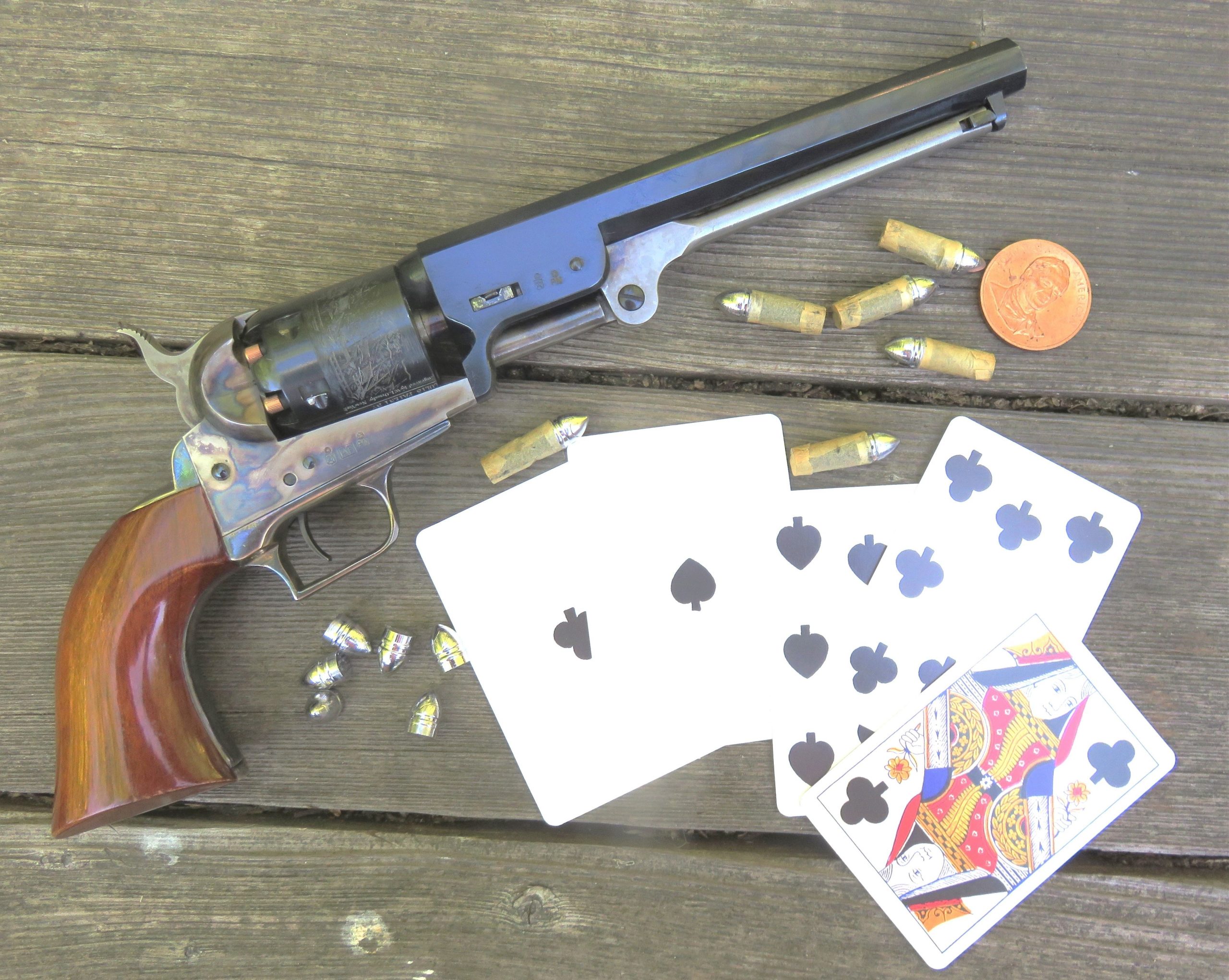
By Mike Nesbitt | Contributing Editor
Let me tell you a little bit about an interesting outfit called Guns of the West.
This company is located in Utah, 3and it is headed by Dustin Winegar. He also produces several videos which are shown on YouTube under “Guns of the West.” Dustin usually appears in those well-done films very neatly dressed and wearing his flat-brimmed black “Wyatt Earp-style” hat, but we shouldn’t hold that against him. And he often shows himself shooting at plastic jugs filled with what looks like re-bottled Nesbitt’s Orange drink (and hitting them!) but I try to not hold that against him either. Actually, his videos are quite interesting and informative, I will admit to watching his video on making paper cartridges for my .36 Navy with special interest, and I certainly learned things.
What really drew my attention to Guns of the West was the kits for making paper cartridges and they are available for several calibers; from .31 to .44 and the kits for .44 caliber paper cartridges are made in three sizes or lengths for the .44 Army, the .44 Extra Long, and the Dragoon & Walker Colts. After reading about what each of these kits contained, I ordered one to make the .36 caliber cartridges.
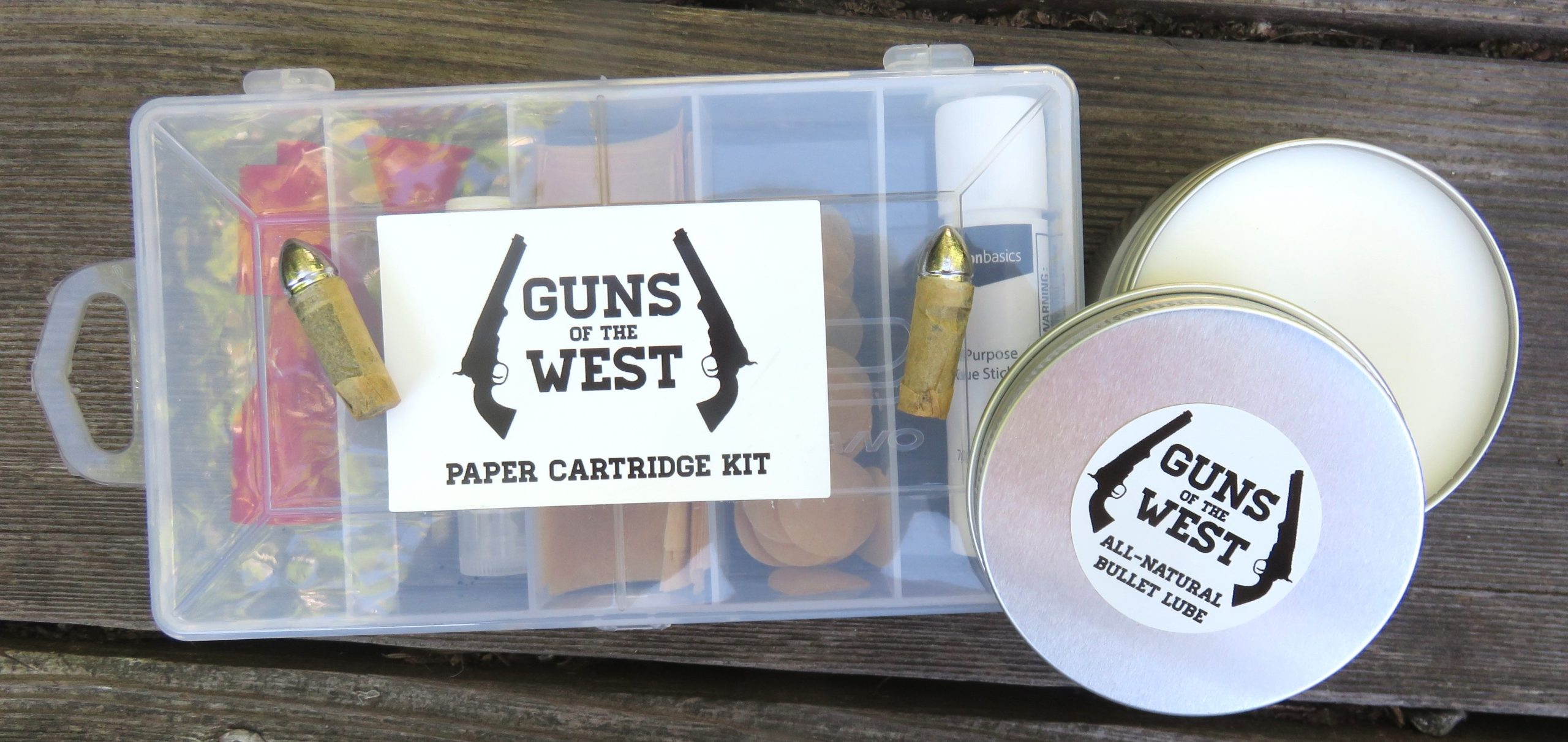
Here’s what is said about the Guns of the West paper cartridge kits: “This easy-to-use kit allows you to make paper cartridges for cap & ball revolvers in .36 caliber. In addition to the former, this kit also includes a powder funnel, 50 leaves of paper that can be cut to make 100 cartridges, 100 pre-cut paper circles, bullet lubricant, and a glue stick. The former even has a built-in powder measure!” That, of course, doesn’t answer everything but it was easily good enough to make me order one.
When my kit arrived (by Pony Express, of course) I started making cartridges right away. But I did make one very slight change, updating the instructions Dustin had provided. To be specific, he says you should cut the pieces of cartridge paper, what he calls “leaves,” in half. Being just a little thriftier, I cut them into thirds which gave me the papers to wrap 150 of the cartridges for .36 caliber. (That probably couldn’t be done if making the .44 caliber cartridges.)
Then, after watching the video one more time, I really started to “roll my own” paper cartridges. The bullets I used were the 126-grain conicals cast from the Eras Gone bullet mold and for powder I used Schuetzen 3Fg. At first, I used just 15 grains of powder, measured with a Cash powder measure, poured right from my horn. After making only three or so of the paper cartridges, where I could see that amount of powder really wasn’t quite enough to fill the paper cartridge, I switched to using the powder measure that is part of the Guns of the West kit which holds 17 grains and that obviously did work better.
Yes, I could have modified my technique slightly to make shorter cartridges which I might have done if that was needed. But the paper cartridge kit was working too well as it was, so no modifications were even considered.
My first few cartridges looked wrinkled and horrible. They were certainly not up to any standards for appearing in pictures, but they did shoot very nicely. The later cartridges weren’t as wrinkled because the 17-grain powder charge simply filled them up better and those sounded even better when they were fired. The paper used with the kits by Guns of the West for the cartridges is not nitrated and, actually, there are no shortcomings with that at all. I have yet to find a scrap of paper or even the suggestion or any evidence of paper in the chambers of my Colt .36 Navy after shooting these cartridges.
Shooting the cartridges, after caps were popped to clear the nipples, was preceded by loading them into the Navy Colt’s chambers and that had to be done with a certain precision. The paper of the cartridge could not extend further up the bullet than the “heel” which is designed to accept the paper. If it went further than that, the cartridge could not be inserted into the chamber far enough for the bullet to be rotated into position behind the rammer. That bullet is already at maximum length for the Colt Navy revolver. If there is any paper extending further up the bullet than the bullet’s heel, it should be carefully trimmed away before trying to load it into a chamber.
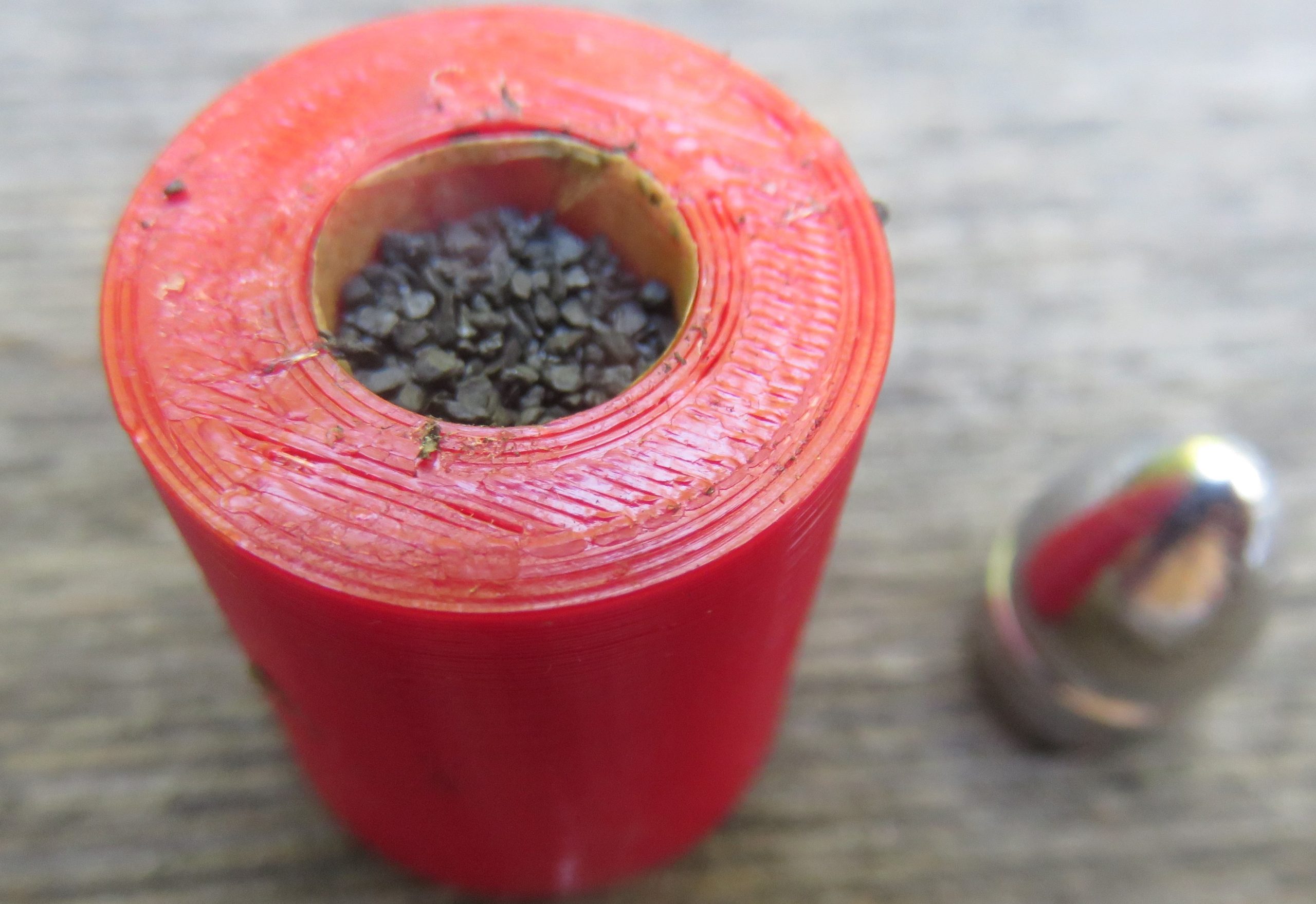
Once all six of the chambers were loaded with the paper cartridges, each chamber mouth was then filled with Guns of the West’s all-natural bullet lube to lube the bullets and to seal the chambers against a possible chain fire. (The Eras Gone conical bullets have a small lube groove but I did not add lube to those grooves, lube was only added to the front of the bullets.) Here’s the description of this lube, “This all-natural lubricant is made from a historically-correct mixture of beeswax and lamb tallow. It works very well for cap & ball revolvers and also as a patch lube for muzzle loading rifles. This lube is very firm and stays in place well, even under recoil. The 4-ounce tin container fits easily into a range bag and can be heated for dip lubing. The dimensions of the container are 2.63 inches wide by 1.77 inches tall.” That’s a good amount of lube and my shooting so far has only “dented” that generous tin just a little bit.
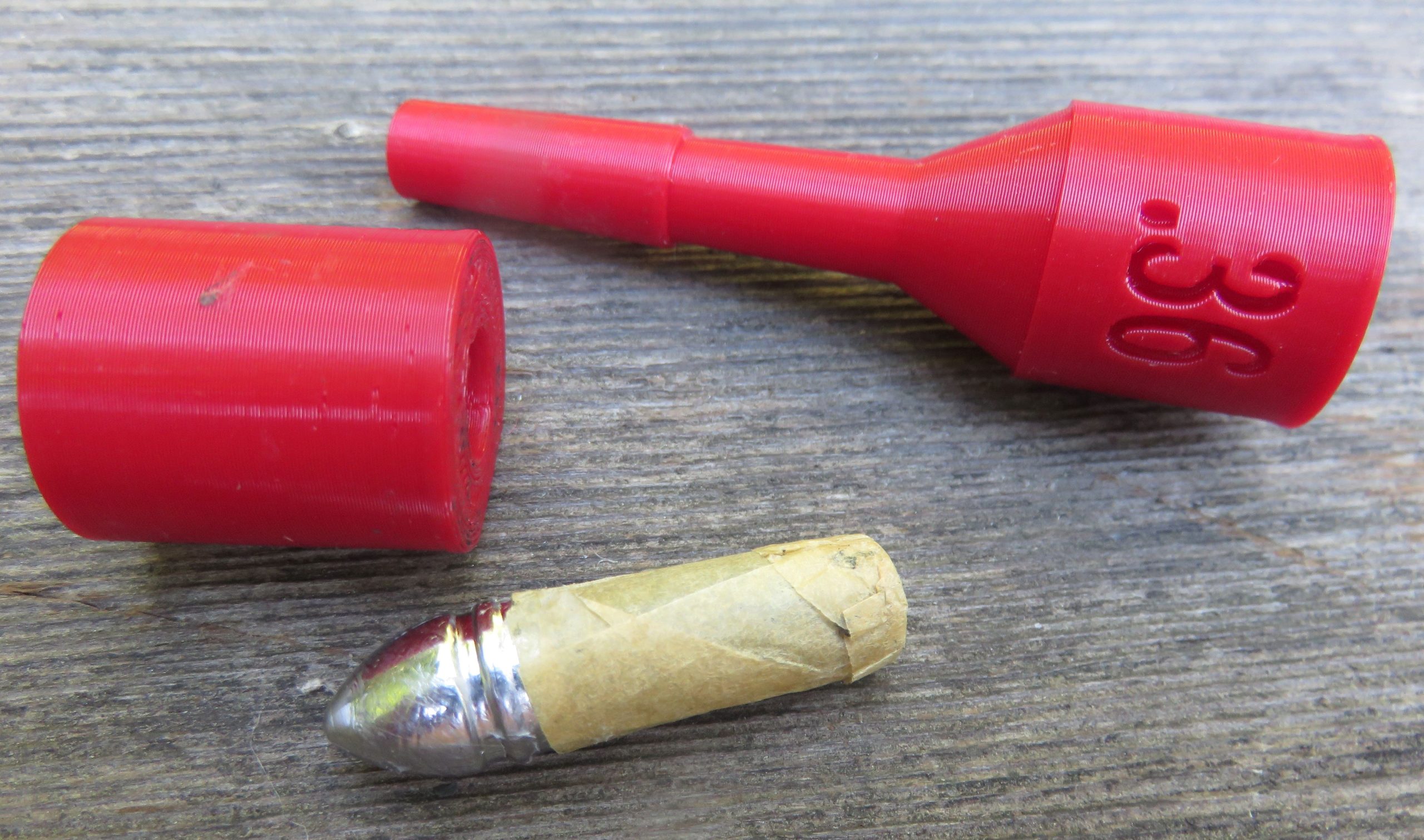
Now for the shooting, my first six shots were fired offhand, mainly to enjoy how well the cartridges worked rather than to check their accuracy. Yes, I was just having fun! Those first shots were fired at a hanging gong. At first, a couple of shots went high, typical for a Colt Navy Model. Then I held lower, just low enough to get good hits with the last three shots. The cartridges passed the shooting test with flying colors and they all fired with no hesitation at all.
Next a 100-yard target was posted at just 30 feet, as if it was a target I just couldn’t miss, for a quick test of this gun’s as well as the paper cartridges’ accuracy. With a two-hand hold, and holding the sights on the bottom of the black, the first shot told me that things were going to be just fine. That shot was the 9 printing at 2:00 o’clock. The next 5 shots all did very well and the final score on the target with all 6 shots came to a total of 58-X. I call that very good, indeed.
Following that, I’ll give the Guns of the West paper cartridge kit a high recommendation. The cartridge forming pieces in the kit are a sturdy plastic which should last for a very long time. In addition to those forming pieces, the kits contain a powder funnel, the 50 small sheets of papers plus 100 pre-cut paper circles which are used to cover the bottom of the cartridges, glue, and a small tube of bullet lube. Those little items are all contained in a clear plastic hinged-top case. The price for the kit is $35. The large tin of Guns of the West lube was another $15 and that works very well too. Contact Dustin at Guns of the West by calling 385-229-9393 or by email at gunsofthewestllc@gmail.com. And you can see all of the Guns of the West products on their web site at gunsoftheweststore.com.
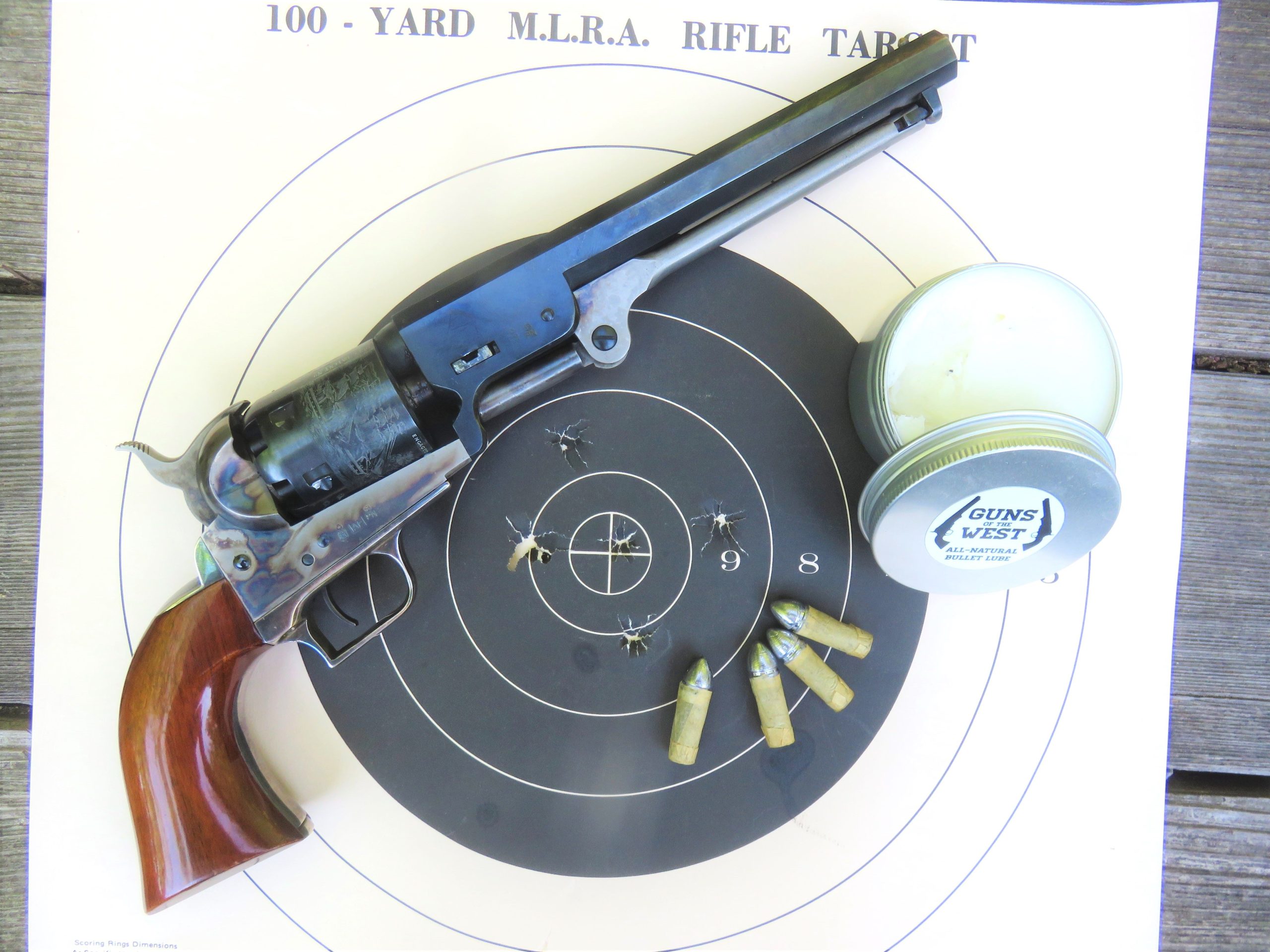
For years I’ve wondered why “Wild Bill” Hickok preferred the .36 Navy over the .44 caliber revolvers. The only reason I can think of might be their accuracy…
My own shooting with the .36 Colt Navy using the paper cartridges was good enough that I’ll probably be using paper cartridge with that gun from now on. Using the paper cartridges did add to the convenience of loading simply because the steps of pouring the powder and selecting the bullets was already done. I guess any real time-savings while loading the gun were actually already taken up with the time spent while making the cartridges. Even so, the loading was simplified and I found it advantageous. That’s more than enough to invite me to shoot my .36 Navy more often…

